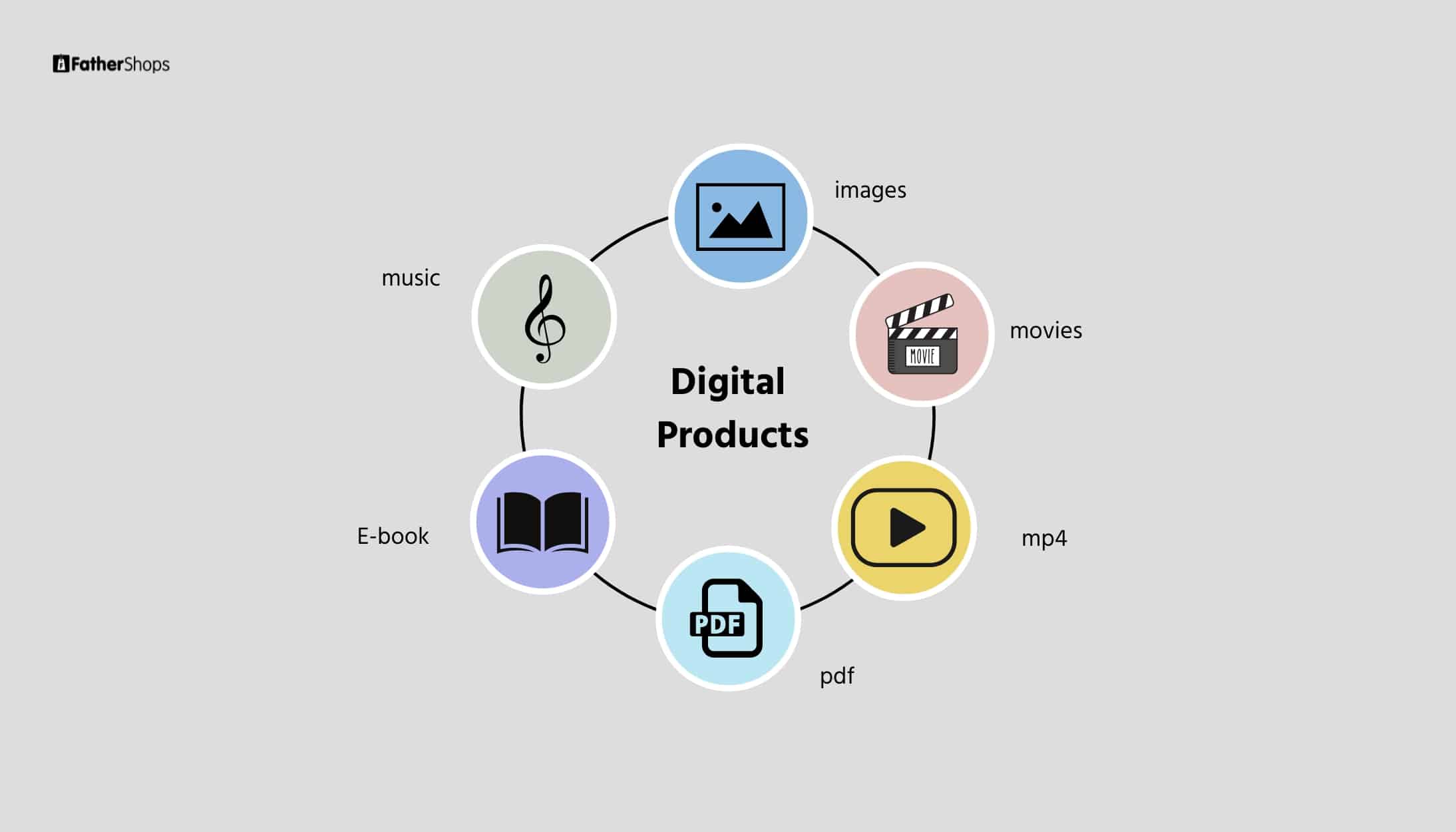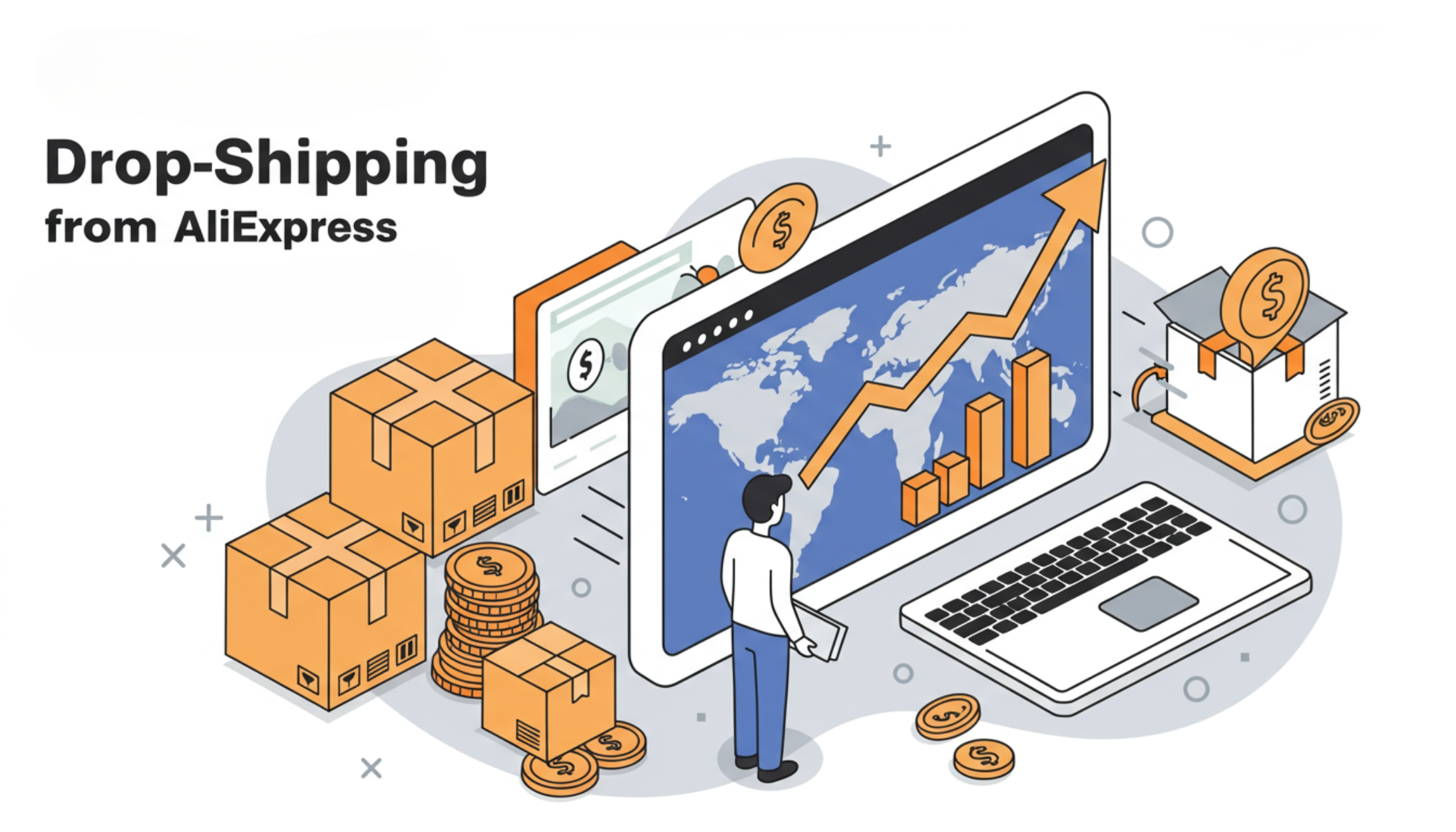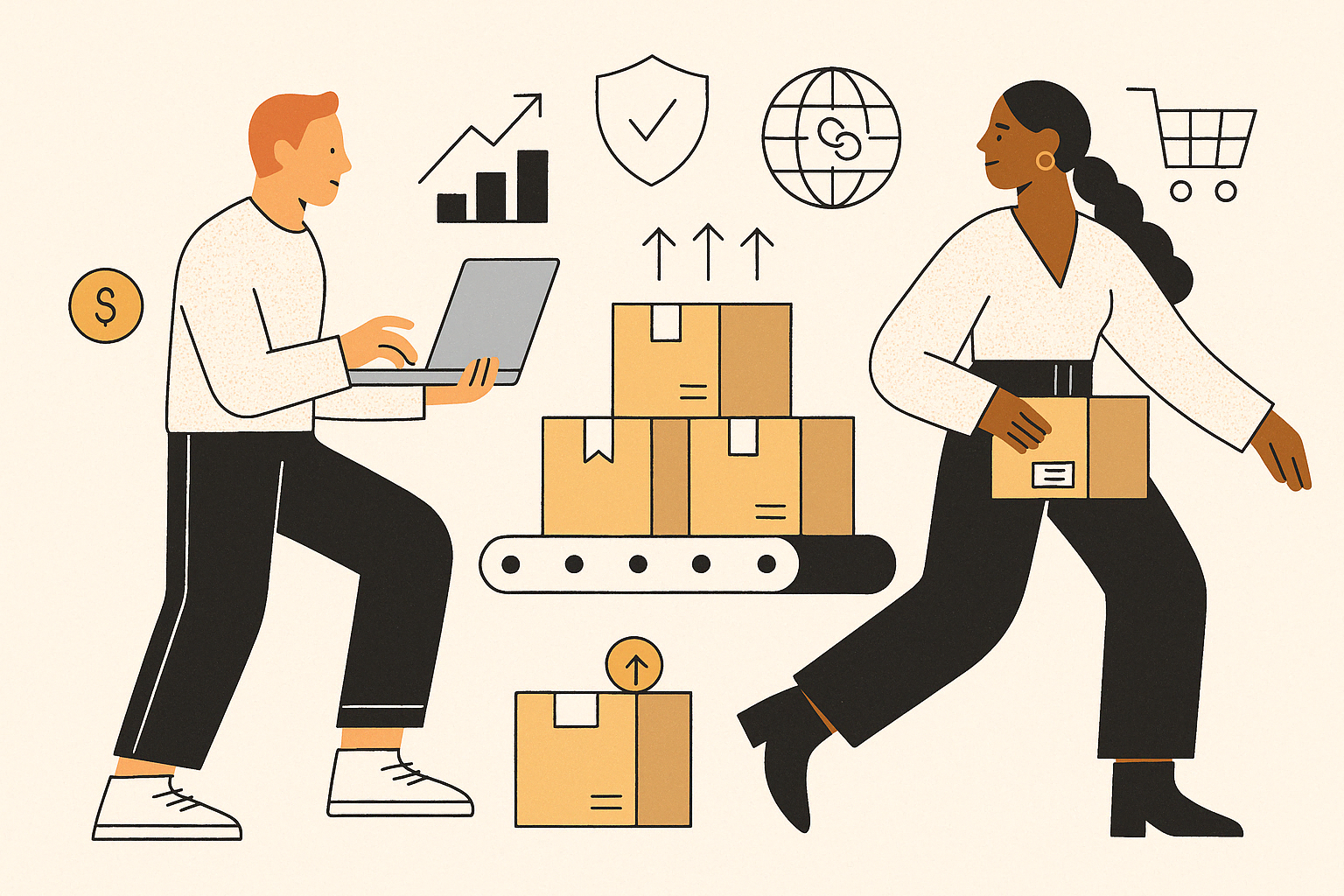Table Of Content
- Introduction
- What is a Digital Product?
- Why Sell Digital Products?
- The Growth of Digital Products: Key Statistics
- Where to Sell Digital Products
- 10 Best Digital Products to Sell
- How to Create Digital Products
- Apps Where You Can Sell Digital Products
- Digital Dropshipping: A Simple Way to Sell Without Creating
- Frequently Asked Questions (FAQs)
Introduction
We’re living in a time where more people than ever are rethinking the 9-to-5 and looking for smarter, more flexible ways to earn.
One of the most powerful opportunities today is Creating and selling digital products online.
It makes sense. No inventory. No shipping headaches. And no cap on how many people you can sell to.
With just one well-made product, you can reach a global audience and build income that continues to grow — even while you sleep.
Whether you’re an artist, educator, developer, or someone with a passion or skill to share, digital products open the door to turning what you know into what you earn.
Today, I’ll walk you through everything you need to get started — from what digital products actually are, to how to create, how and where to sell in this fast-moving space.
What is a Digital Product?
So, let’s first understand what is a digital product?
It is a type of product that doesn’t exist physically — it’s an intangible asset that people buy and access online.
Instead of shipping something to a customer’s door, you deliver value instantly, through files, content, or software.
Think about the last eBook you downloaded. Or the resume template that saved you hours. Maybe even an online course that taught you a new skill.
These are all digital products — and the best part is, once they’re made, they can be sold over and over again with no extra cost per unit.
Because there’s no production, no inventory, and no shipping, digital products are a go-to model for creators and entrepreneurs who want to monetize their knowledge, creativity, or tech skills.
Here are just a few examples of digital products:
- Ebooks and expert reports
- Online courses and skill-based workshops
- Canva templates, resumes, and design kits
- Software tools, plug-ins, or mobile apps
- Stock photography, B-roll footage, and digital video assets
- Royalty-free music, sound effects, and podcast intros
- Printable planners, calendars, and habit trackers
- Custom fonts, icons, logos, and illustration packs
If it can be downloaded, streamed, accessed online, or delivered via email — it can probably be sold as a digital product.
Why Sell Digital Products?
Selling digital products isn’t just a trend — it’s a smart, sustainable business model that more creators are tapping into every day.
Whether you’re aiming to build passive income, ditch physical inventory, or scale without limits, digital products check all the boxes.
Here’s why so many entrepreneurs and creators are jumping into this space:
- Low Overhead Costs
You don’t need a factory, warehouse, or shipping partner. Your biggest investment? Your time, your skills, and a few digital tools to bring your product to life.
That means your margins stay high and your startup costs stay low. - Unlimited Scalability
Create it once, sell it forever. Unlike physical goods, you don’t need to restock or worry about logistics. One digital product can be downloaded by 10 people — or 10,000 — with no extra effort on your part. - Passive Income Potential
Once your product is live, it can generate sales while you focus on other things — building your brand, launching new products, or even taking time off. It’s the foundation for building recurring, hands-off income streams. - Global Reach
There are no borders online. With the right platforms you can sell your digital products to customers across the globe — 24/7. - Creative and Strategic Freedom
You’re not just selling a product — you’re creating something entirely your own. You choose the format, the topic, the audience, and the way it’s marketed.
Whether it’s a workbook that helps people get organized or a coding course that teaches a valuable skill, you’re free to make something that matters to you.
The Growth of Digital Products: Key Statistics
The digital product space isn’t just thriving — it’s booming. Whether it’s online education, creative content, or mobile apps, the numbers show one thing clearly: the demand is massive and still growing.
Here are some key stats that highlight just how powerful and profitable the digital product industry has become:
Global E-Learning Market Growth
The rise of online learning has completely transformed how people gain new skills. From casual learners to corporate training programs, digital education is here to stay.
Digital Content Revenue
From streaming movies and music to downloading eBooks, digital content continues to dominate consumer spending.
Mobile Apps as Digital Products
Apps are one of the most profitable forms of digital products, driven by demand for convenience, entertainment, and productivity.
The Rise of Online Course Platforms
The pandemic accelerated the shift toward digital learning, and platforms like Udemy, Teachable, and Skillshare have seen massive growth.
Growth of Digital Marketplaces
Marketplaces like Etsy, Gumroad, and Creative Market are making it easier than ever for creators to start selling digital products — no tech background required.
Surge in Digital Art and NFTs
Digital art has entered a new era with NFTs (non-fungible tokens), offering creators new ways to monetize their work and connect with collectors.
Digital Music’s Continued Rise
The music industry has gone digital — and streaming platforms are leading the charge.
Where to Sell Digital Products
Choosing the right platform is one of the most important decisions you’ll make when launching a digital product. The good news? You’ve got options — and plenty of them.
Whether you want full control or a ready-made audience, there’s a platform that fits your style and goals.
Here’s a breakdown of the most popular ways to sell digital products today:
1. E-commerce Platforms
If you want to build your own store from the ground up — with full control over branding, pricing, and user experience — platforms like Fathershops are ideal.
- Great for creators who want to build a standalone digital brand
- Tons of flexibility with design and features
- You own your customer relationships (email list, data, etc.)
2. Marketplaces
Want to tap into a built-in customer base without worrying about setting up a full site? Marketplaces like Etsy, Gumroad, and Creative Market are perfect for that.
- Ready-made traffic from people actively searching for digital goods
- Easy to set up and start selling quickly
- Limited customization, but very beginner-friendly
3. Online Learning Platforms
If you’re offering an online course, platforms like Udemy, Teachable, and Thinkific give you all the tools to deliver content smoothly and professionally.
- Structured tools for course creation, video hosting, quizzes, certificates
- Built-in support for payments and student engagement
- Some platforms (like Udemy) also offer marketplace exposure
4. Subscription Platforms
Want to offer exclusive content to a loyal community? Platforms like Patreon and Substack allow you to build a subscriber base that supports you monthly.
- Offer gated content (like videos, newsletters, templates, bonus content)
- Ideal for creators with consistent publishing schedules
- Builds community and recurring income
5. Your Own Website
Using website builders like WordPress, Webflow, or even Notion (with the right tools), you can sell directly from your own site.
- Full control over branding, design, and marketing
- Can be combined with email marketing, blogs, and SEO
- Slightly more setup work, but completely customizable
10 Best Digital Products to Sell
If you’re excited about selling digital products but not quite sure what to create, you’re not alone. The good news is, there’s no shortage of options — and plenty of demand.
Here are ten of the most profitable and popular digital product types you can create and sell today:
1. Ebooks and Guides
If you have got expertise in a specific topic. You can Package it into an ebook or downloadable guide.
- Ideal for bloggers, consultants, and niche experts
- Helps build authority and trust in your space
- Can be used as both a product and a lead magnet
2. Online Courses
Courses are one of the most high-value digital products out there. If you can teach a skill or guide someone through a transformation, people will pay for it.
- Great for educators, coaches, and professionals
- Can include video lessons, workbooks, quizzes, and certificates
- Highly scalable once created
3. Printables and Templates
From productivity planners to budgeting sheets and resume templates — people are always looking for ready-to-use tools that save time.
- Easy to create using tools like Canva or Adobe
- Popular on Etsy, Gumroad, and Creative Market
- Great for passive income and repeat sales
4. Stock Photos and Videos
If you’re a photographer or videographer, you can sell your content to marketers, bloggers, and businesses in need of high-quality visuals.
- Passive income through stock sites or your own platform
- Can license by use (commercial vs. personal)
- Works well for creators with large content libraries
5. Digital Art and NFTs
Whether you create illustrations, 3D models, or generative art, digital art is in high demand — and NFTs have opened up even more monetization options.
- Platforms like OpenSea, Foundation, and Rarible support creators
- You can build community and exclusivity with limited editions
- Emerging, fast-growing market
6. Software and Mobile Apps
If you can code or partner with a developer, digital tools and apps can be incredibly profitable.
- Can solve niche problems or improve workflows
- Monetization options: one-time purchase, freemium, or subscription
- Great long-term potential with ongoing updates and features
7. Website Themes and Plugins
If you’re a designer or developer, building themes for platforms like WordPress, Shopify, or Webflow can be a consistent income stream.
- Can be sold on your own site or marketplaces like ThemeForest
- High demand among bloggers, startups, and small businesses
- Offers room for upsells (like installation, customization)
8. Music and Audio Files
If you’re into music production, voice work, or sound design, audio products are another great niche.
- Sell background music, sound effects, loops, or podcast intros
- Used by YouTubers, filmmakers, game developers, and more
- Can be licensed through platforms like AudioJungle or Pond5
9. Graphic Design Assets
Graphic designers can create and sell assets like:
- Icons
- Logos
- UI kits
- Infographic templates
- Mockup files
These are often purchased by other designers, developers, and marketers.
10. Membership Content
memberships are one of the most powerful digital models out there.
Because it is a recurring income also builds deeper customer relationships which helps in building community.
- Offer exclusive content, workshops, templates, coaching, or group access
- Use platforms like Patreon, Circle, or Kajabi
- Perfect for long-term value delivery
How to Create Digital Products
Creating a digital product starts with an idea — but the real magic happens when you turn that idea into something useful, valuable, and sellable. Whether it’s a course, a template, a piece of software, or a downloadable guide, the steps to build it are the same.
Here’s how to take your concept from “what if” to “live and selling.”
1. Find the Right Product Idea
The best digital products solve a specific problem, help people save time, or give them something they love to use. You can start by creating your own, or even promoting someone else’s digital products as an affiliate.
If you’re going the DIY route, consider what you’re good at, what your audience needs, or what people are actively searching for online.
Popular digital products include:
- Ebooks
- Design templates
- Photoshop presets
- Online courses
- Fonts, icons, and illustrations
- Software tools and plug-ins
- Digital planners and worksheets
- Music, audio packs, and entertainment content
Don’t overthink it during the idea phase. Brainstorm freely. At this point, quantity matters more than perfection.
Ask yourself:
- ❓ What do people ask me for help with?
- ❓ What tools or knowledge have made your own life easier?
- ❓ What can you teach or simplify for someone else?
For example, if you’re great at organizing your workday, that could become a productivity planner.
If you’re a photographer with a signature editing style, your presets might be exactly what beginners are looking for. If you’re a designer, your Figma or Canva templates could save someone else hours of work.
2. Validate the Demand
Before you spend days or weeks creating something, make sure people actually want it. Validating your idea early saves time, energy, and disappointment.
Start by running keyword research to see how many people are searching for your topic. Tools like Ubersuggest, Google Trends, or AnswerThePublic can help spot opportunities. A growing search trend usually signals growing demand.
Next, get into communities. Facebook groups, Reddit threads, Discord channels, and niche forums are filled with people asking for help — pay attention to the patterns.
If a lot of people are asking the same question or struggling with the same challenge, that’s a green light for your product idea.
Reviews are another goldmine. Look at similar products and read what buyers are loving or missing. You’ll find all sorts of insights in customer reviews, whether on Amazon, Etsy, or blog posts comparing digital tools.
Finally, test the waters with a small version of your product. A free sample, a one-page PDF, or a quick tutorial video can help you gauge interest and get feedback — before you commit to the full version.
3. Plan the Product Experience
Once you know what you’re going to create, it’s time to sketch out how it’ll look, feel, and work. If you’re building a course, outline the modules and lesson flow. Decide if you’ll include videos, workbooks, or quizzes.
If it’s a template or toolkit, map out the structure, formats (PDF, PSD, DOCX, etc.), and the instructions your customers might need to use it smoothly.
Make sure the product delivers a result — that could be knowledge, clarity, efficiency, or just a creative boost. At the heart of every great digital product is a simple question: What change does this create for the customer?
4. Build Your Digital Product
Now it’s time to create. Use tools that suit your workflow and skill level. You don’t need to be a designer or coder to make something valuable.
For ebooks and guides: Google Docs, Canva, Scrivener
For templates: Canva, Adobe InDesign, Notion
For courses: Loom, ScreenFlow, Teachable, Thinkific
For software: No-code platforms like Bubble, or code frameworks like React Native
For design assets: Adobe Illustrator, Figma, Photoshop
For audio: GarageBand, Audacity, Ableton Live
Focus on quality and clarity, but don’t get stuck chasing perfection. Your first version doesn’t have to be flawless — it just has to work well and solve the problem you promised to solve.
5. Test and Tweak
Before launching to the public, test your product with a small audience. This could be a few trusted friends, early subscribers, or members of an online community you’re active in.
Ask them for honest feedback. Were the instructions clear? Did the product do what it promised? Were there any moments of confusion or friction?
Use that feedback to improve the user experience. Small changes — like tweaking your layout, adding a short video guide, or clarifying your messaging — can make a big difference in how well your product is received.
6. Price It and Launch It
Once your product is polished and ready, it’s time to price and launch. Research what similar products are selling for, but don’t base your pricing solely on others. Think about the transformation your product provides, the time it saves, or the skill it helps someone build.
You can offer it as:
- A one-time purchase
- A bundle of related products
- A subscription with regular updates or new content
Then launch. Announce it to your email list. Share it in your community. Post behind-the-scenes creation moments or testimonials from your testers. People love seeing the process behind what you’ve built — it builds connection and trust.
Creating a digital product takes time, intention, and a bit of courage. But once you’ve built one, it becomes an asset that works for you around the clock. Start small, stay consistent, and keep improving as you go — that’s how real digital product businesses are built.
Apps Where You Can Sell Digital Products
Once your digital product is ready, choosing the right platform or app to sell it is crucial. The good news? You don’t have to build everything from scratch.
There are tools specifically designed to handle everything from hosting your files to automating delivery and managing payments.
Here are some of the top apps and platforms that make selling digital products easier:
1. Gumroad
One of the most beginner-friendly platforms, Gumroad lets you sell ebooks, courses, templates, and more. It handles everything from product hosting to payment processing and digital delivery — with no monthly fees (they take a small percentage per sale).
2. Payhip
Payhip is an all-in-one platform for selling digital downloads, memberships, and courses. You can embed it into your own website or use their hosted storefront. It also includes marketing features like coupons, affiliates, and email lists.
3. Podia
Podia is ideal for creators offering digital downloads, online courses, and memberships. It includes built-in email marketing, product bundling, and webinar hosting — all under one roof.
4. SendOwl
SendOwl makes digital product delivery fast and secure. It’s known for its clean checkout experience and allows you to sell directly from your existing website or social media.
5. Shopify + Digital Download Apps
If you’re using Shopify, you can turn your store into a digital product machine using apps like: Digital Downloads (Shopify’s free app)
SendOwl (also integrates with Shopify)
Sky Pilot (for video + file delivery)
Easy Digital Products (simple and flexible for all file types)
Digital Dropshipping: A Simple Way to Sell Without Creating
If you like the idea of selling digital products but don’t want to create your own (at least not yet), digital dropshipping might be a great place to start.
It’s a simple model:
You sell digital products made by someone else, and when a customer buys, the product gets delivered automatically — without you needing to do anything manually. You’re in charge of bringing in the customers, while the product creator handles the rest.
Think of it like running your own store, but instead of stocking it with things you’ve made, you fill it with ready-made digital products — ebooks, templates, design files, courses, or music.
You set the price, make the sale, and keep a share of the profit.
People use this model to:
- Sell licensed templates or design assets
- Resell digital planners or stock photos
- Offer pre-made online courses under their own brand
It’s a low-risk way to enter the digital space, especially if you’re still figuring out what you want to create or just want to test a niche first.
Just make sure to check the license terms — some products are made to be resold, and others aren’t. As long as you’re transparent and ethical, it’s a solid way to start selling online without creating from scratch.
If you want to explore this further? Here’s a full guide on how digital dropshipping works that walks you through it step by step.
Frequently Asked Questions (FAQs)
Q1: What kind of digital product should I sell as a beginner?
Start with something simple that you know well. Ebooks, templates, and printables are great starting points because they’re easy to create and useful for a wide range of people.
Q2: Do I need a website to sell digital products?
Not necessarily. Platforms like Gumroad, Payhip, and Etsy allow you to sell without a website. But having your own website gives you more control over branding, marketing, and customer relationships in the long run.
Q3: Can I sell the same digital product on multiple platforms?
Yes! In fact, many creators do. Just make sure you’re not violating any exclusivity rules on certain platforms. Selling on multiple channels increases your visibility and revenue potential.
Q4: How do I protect my digital product from being copied or pirated?
You can’t eliminate piracy entirely, but you can minimize it. Use platforms that offer secure file delivery and license agreements. You can also add watermarks, usage rights, or limit download attempts to reduce unauthorized sharing.
Q5: What’s the best way to price a digital product?
Look at what similar products cost, but also consider the value you’re offering. A high-quality, results-driven course could be priced at $100+, while a simple template might go for $5–$25. You can test different pricing strategies — bundles, tiers, subscriptions — to see what works best for your audience.
Q6: How do I handle customer support for digital products?
Create a simple FAQ or product guide that addresses common questions. Use email, chat widgets, or a contact form to handle direct inquiries. Most buyers just need clarity, not constant support — so clear communication upfront helps a lot.





